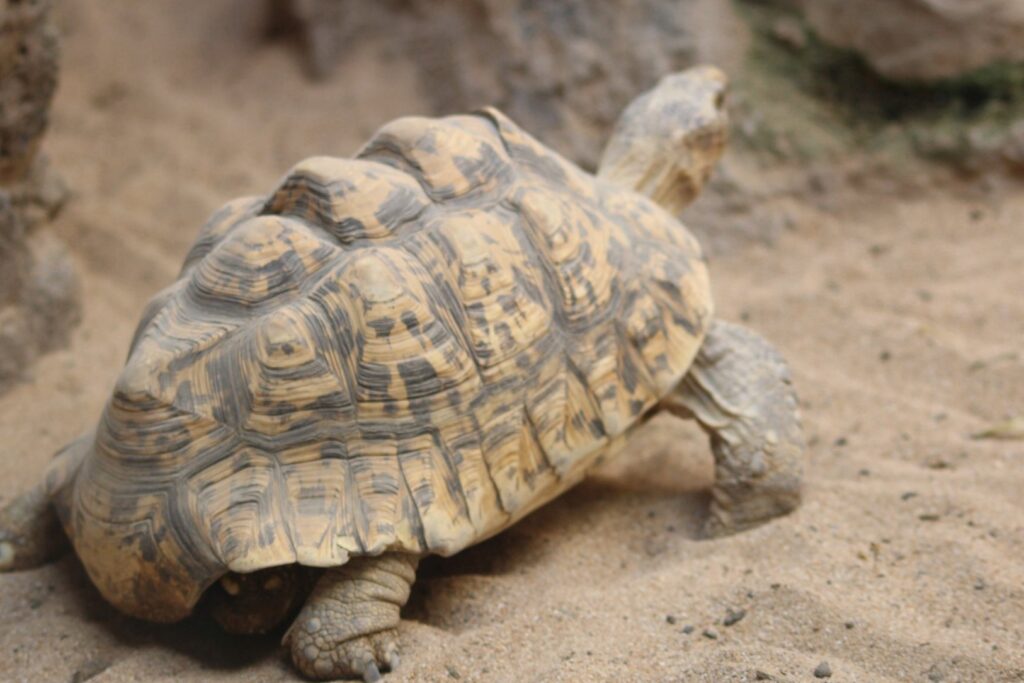SPUR-THIGHED TORTOISE
Testudo graeca graeca

LENGTH

18 cm
WEIGHT

900 g
LIFESPAN

20 years
The spur-thighed tortoise is the most widely distributed species of the genus testudo and can be found in countries in Europe, Africa and Asia.
General characteristics
They have a very bulky, olive-green carapace. Each plate has black spots and black edges. The inside of the carapace is yellow with black spots, and these spots are seen much more in juveniles than in adults. The head is yellow with some black spots.
They have a spur on the back of each thigh that distinguishes them from other species of the same genus.
Feeding
They feed on vegetables and greens. Their main foods include wild plants, dandelions, as well as clover and rosemary among others. Although they are herbivores, they can occasionally be seen eating carrion and carrion carcasses.
Behaviour
Turtles take advantage of the first rays of sunlight to warm up and thus speed up their metabolism. When the sun starts to get too hot, they dig holes in the ground to cool themselves, and once the sun is going down, they take advantage of this to get moving again. The depth of these excavations is usually about twenty centimetres.
In the months of November or December they go into hibernation, and the temperature of the excavation must be adequate, because if the temperatures are too low it can cause death, and if the temperatures are too high it can cause them to use up energy that should last them all winter.
Reproduction
They reach sexual maturity at about ten years of age. To lay their eggs, they dig a hole with their hind legs where they will later deposit them. The sex of the offspring will depend on the temperature at which the eggs have been kept. If the temperature is below 31.5ºC, the eggs will be mainly male, while if the temperature is higher, females will predominate.
Threats
They are commonly traded as pets in their countries of origin which can lead to unsustainable culling of wild individuals and cause high mortality rates in captivity due to inadequate care.
Distribution
It is present in Europe, Africa and Asia, more specifically in countries such as Morocco, Algeria, Spain, Turkey, Greece, Israel and Syria, among others. These tortoises like climates with little rainfall, where there is a lot of bushes and shrubs, it could be said that it has a Mediterranean climate, although it lives in many different climates depending on the country and the subspecies.

Did you know?
The plastron of the males (bottom shell) is concave to facilitate copulation.
In the past, their caparaces were used to make everyday objects, jewellery and sounding boards for musical instruments.
It is also called the Greek tortoise.
Conservation status
